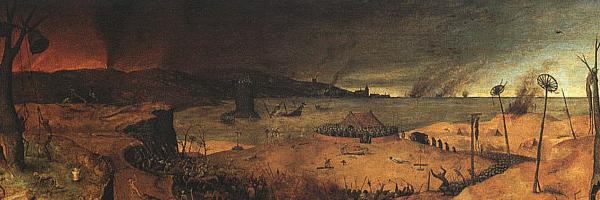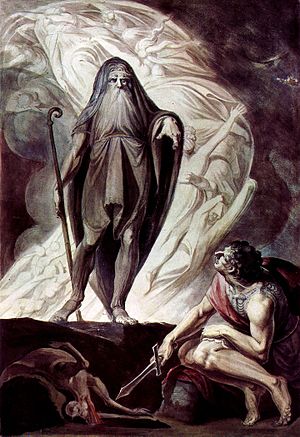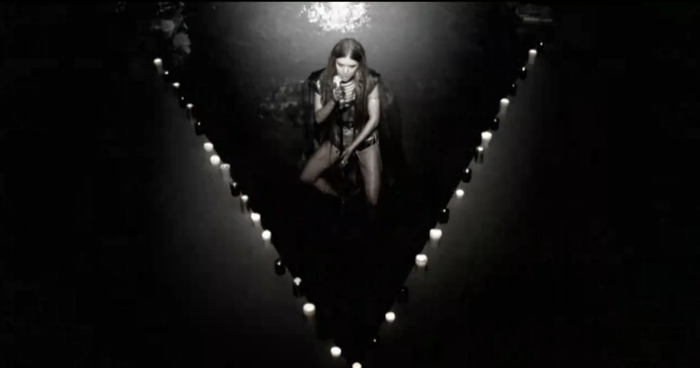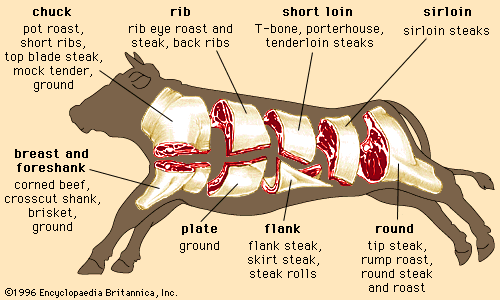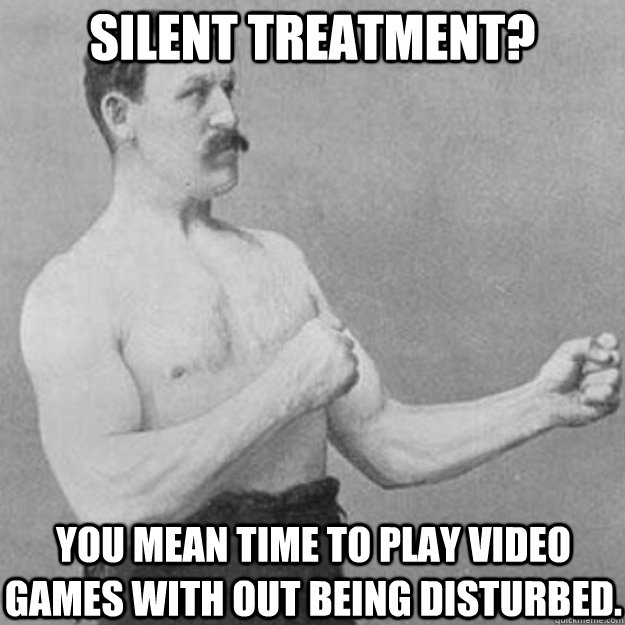People
like to be convinced of things. We like to convince ourselves of almost
everything. Many people actually need to live in a world of self-delusion in
order to attain a measure of happiness.
This is because there seems to be a problem with responsibility. In Ceremony
by Leslie Marmon Silko, Tayo seems to take on the responsibility of there being
no rain because of his reaction to the constant precipitation in another part
of the world, but he fails to really pierce through the shroud that was constructed
by his very own society, which over time became more than just a series of
stories intermingled with history, this manipulative force is the shroud of
myth.
One
of the ingredients of myth is mystery.
The keynotes of the mystery are held within symbols. The symbols then
act as a signifier that act as manipulative directives that seem to hold an
insidious power to program the people who are especially attuned to them. This
insight leads into an important question: how do people become attuned to these
insidious signifiers and what they signify? The media. In the days before the existence of the
internet and the television, there was radio, before radio, there was
literature, before literature, word of mouth; it all boils down to the
communication of commonly held beliefs of the majority, and the mere fact that
the majority holds onto the beliefs of the signs they invest themselves in
gives a value to them that become an intrinsic part of society.
Look
at the obvious signifiers in other myths, like the Holy Grail. The Holy Grail is not confined to one token
instance. In an epistemic sense from
pretty much any camp of logic, the Holy Grail should not be knowable, since it
never really seems to hold one true form, and its purpose seems to morph with
the people who interact with it. This
untouchable entity that is the Holy Grail exists in the twilight of reality, is
known, but at the same time, is unknown. Yet, it is referred to repeatedly with
enough power to command the people to adhere to a certain realm of beliefs,
shaping those people to become even more attuned to the message of the
church. This is myth. In Ceremony myth is a horrible cycle that
has been repeated throughout time. Tayo
was lost in many ways. He was not wholly
Native American and not wholly Caucasian. This put him in a place where two
worlds of norms and mores collide. Tayo, because of his actual geological
position in life was more steeped in the ways of the Native Americans. Their myth began to vie with the American
dream. As the story began to play out, a
certain binary between the two myths began.
The Native American Myth was grounded in history, songs, ceremony and
the world whereas the American Myth is grounded in a dream, but enforced by the
agency of violence.
Native
American storytelling relies heavily on the shroud of myth in order to create
signs that are recognized and obeyed throughout the generations. The storytelling of Native Americans defies
the boundaries of the page by relying on word of mouth, ritual, music, and the
world as a very interactive stage. For
the culture, these stories were not only a form of entertainment and sometimes propaganda;
they were a way of living. The very people who told the stories were trapped by
them. It is an interesting twist that the storytelling of the Native American
people in Silko’s Ceremony was
confined to the page. This in and of
itself is a way of breaking the traditional myth cycle of the Native American
heritage, but also at the same time represents how Manifest Destiny started to
confine the Native American culture.
The most obvious sign of Native American
culture was how Silko gave the Native myth a voice through poetic
expression. Poems have long been
regarded as powerful, full of signs and still yet not totally definable, they
reflect the nature of myth itself, powerful, yet untouchable. “The words gathered inside him and gave him
strength. He pulled on the corporal’s arm; he lifted him to his knees and all
the time he could hear his own voice praying against the rain. / It was summertime / and Iktoa’ak’o’ya—Reed
Woman / was always taking a bath. / She spent all day long / sitting in the
river / splashing down / the summer rain. / But her sister / Corn Woman /
worked hard all day / sweating in the sun / getting sore hands / in the corn
field. / Corn Woman got tired of that / she got angry / she scolded / her
sister / for bathing all day long.” (Silko 11-12). This passage shows how the
narrative and poetic forms interact with each other. The narrative is in touch
with the poetic form, it seems that the poetic form, by the way it is inserted
in a moment of action at the height of emotion, seems to be happening inside
Tayo, like an inner narrative, the narrative of his culture, his Native
American side’s myth. This shows how the
myth, embedded in him, makes him seem to act irrationally against the rain. It
is this very primitive irrationality that myth needs in order to be the most effective;
it needs to garner blind trust.
Silko
does a great job in breaking the myth of the hero. She definitely created Tayo as the main
character that would live up to the hero status quo. Just about everybody has become attuned to
the myth of the ‘hero’. Bad stuff
happens, bad (usually male) guy is the cause, hero arrives, battle, hero wins,
people are happy. Tayo is something else.
He was crafted to look so very much like he could be the mythical hero, but he at the end, refused to wear that
mantle. The myth of the hero literally
called out to him to kill Emo with a screwdriver.
At
this point, there must be a short discourse on names. The symbology of names is a powerful tool of
myth, and Silko flaunts this. She is a
bit crafty, but at the same time obvious. The name Tayo is a crafty choice of a
name. It sounds native, but it also phonetically is the same of Tao. Tao means ‘way’. I argue that it is no
mistake that Tayo is symbolic for ‘way’, since he has literally lost his way,
“For a long time, he had been white smoke.
He did not realize that until he left the hospital, because white smoke
had no consciousness of itself. It faded
into the white world of their bed sheets and walls; it was sucked away by the
words of doctors who tried to talk to the invisible scattered smoke.” (Silko
13). It must also be noted that there is
no page number marking that it is indeed page 13. This is because there is nothing on the page.
Tayo is nothing, for he has lost his way, which, if his name means ‘way’ then
he has lost himself, thus he would be nothing.
The quoted line also illustrates how Tayo’s white half seems to want to
believe what is happening in the hospital.
This is a powerful attack on the myth of doctors. Contemporary North American culture tends to
believe doctors, never really realizing that doctors are just really good educated
guesses in a white coat. This leads me
to ask, would people be more apt to believe someone in a black coat, or better
yet, a red coat? Disney color codes it’s characters for a reason: the myths
that make us believe from the time of toddlerhood that dark is bad and scary,
and light is good and safe. The shades in between are for when one grows up,
and is indoctrinated by religion and media, like Disney, who paints red to be
an evil color, within the eyes of villains, and the fires that burn villages to
ashes. This white mist is the signifier of white culture, and how white culture
is commanded by white culture. When white culture enters the hospital, the
white coats rule everything, and there are rarely questions. Any questions that do arise are quickly
ignored because the one asking the question is not wearing a white coat.
Emo
is the character that forces Tayo into the role of the hero. This is perhaps the goal of Emo as the
protagonist. His actions, and even his
torture of Harley are only tools to force Tayo into the role of the hero. Emo
is Silko’s embodiment of emotion, his name is the first part of the word.
Emotion is the direct opposite of rational thinking, so it is fitting that the
power of myth, the witchery has chosen the embodiment of irrationality to force
Tayo into the role of the hero it needed.
“The
wind made his sweat go cold. This was the time…The moon was lost in a cloud
bank. He moved back into the boulders. It had been a close call. The witchery had almost ended the story
according to its plan; Tayo had almost jammed the screwdriver into Emo’s skull
the way the witchery had wanted, savoring the yielding bone and membrane as the
steel ruptured the brain. Their deadly
ritual for the autumn solstice would have been completed by him. He would have
been another victim, a drunk Indian war veteran settling an old feud; and the
Army doctors would say that the indications of this end had been there all
along, since his release from the mental ward at the Veteran’s Hospital in Los
Angeles. The white people would shake their heads, more proud than sad that it
took a white man to survive in their world and that these Indians couldn’t seem
to make it.” (Silko 235).
The horrible reality of
this passage is that if Tayo had killed Emo with the screwdriver, he would have
possibly been the hero to Harley, but Tayo would have just been a victim, the
next scapegoat, the next step in the myth, or the next cycling of the
witchery. Emo was clearly steeped in the
white man’s culture, as he was supposedly defending his own culture by torturing
a half-breed, but he was also drinking wine and beer, decidedly white agents of
culture. Emo had filled himself with the
white man’s culture via alcohol, that he filled himself with the emotional and irrational feelings that
allowed the witchery to continue to manipulate him. By not acting at all, some would say that
Tayo was being a hero, but this is not so.
If Tayo were a hero, Harley would still be alive, because that is how
the stories end. Tayo did not confront the villain, he did not save the needy.
He did nothing. In doing nothing, he
broke the cycle of myth, of the witchery, by not becoming the sacrificial lamb
for white sensibilities. While this seems heroic, it is not, Tayo had just
found his way, he is human, weak, scared, and sick, just a small part of
everything else, no hero.
Christa Wolf author of Cassandra chose Cassandra to be a non-hero. She is cursed with the ability to see the
future, but nobody will believe her. She is the witness that gets to see the
horrible truth of the future visit twice. She is the literary embodiment of
myth itself, and the people trapped by myth. Cassandra knows that Helen, wife
of King Menelaus of Sparta, is not in Troy, and that the people are fighting
for literally nothing. Cassandra knows
that the fighting is really over land and power, and not Helen, but Helen has
become the scapegoat, because it is so much easier to fight for a beautiful
dream rather than the wants of the greedy. Norman Birnbaum writing for The
Nation cited Wolf who wrote, “Anxious
and unbelieving, we continuously denied ourselves, forever lying, celebrating,
bowing, insulting others but we could not get enough pleasure at our own
submissiveness”. She
was writing allegorically since she was Jewish and living through the Nazi
regime. She was using Cassandra to
illustrate how the government had made scapegoats out of the Jewish people and
perpetuated their myth through the manipulation of irrational fear, and for the
attainment of a dream, which is the very same thing that the people trying to
bring the walls of Troy down are experiencing.
The fact that Cassandra can see into the future, and has to suffer twice
because of her ‘gift’, is an allegoric statement showing how history repeats
itself. People might be able to see what
is coming, but do nothing about it. The people who seem to not be a part of the
myth have little effect on the myth. The war in Vietnam was built on a myth. At
the time, the cold war was in full swing. America wanted to stop the spread of
Communism. When France needed some help,
the Americans fueled their continued colonial occupation. This at first glance should be confusing,
since America should have opposed colonial activity since its very history
revolves around being free from being a colony. Yet, by just giving France
money, America is not actually yet firing any shots. This is what the Proxy
wars were, a bunch of financing between China, Russia, Britain, and
America. Then the great myth of democracy
versus communism was built up this way. The hero myth was also used. France was the needy, and America finally
shrugged on the mantle of hero, wading in to save the day. The only problem is that it did not work out
as intended, and the myth was broken.
The Gulf war is yet another myth driven act. By making people believe that there is a
great evil, terrorism, and the imminent invasion of countries like Israel, who
actually boasts one of the most deadly militaries in the world, and Kuwait,
then having America come in to help is nothing less than the call of the hero
again. When the myth starts to falter a
bit, then weapons of mass destruction were brought into the mix. After that, then the war on terrorism began.
In war-time, people don’t think, they react. The reaction that the people in
power want to foster is not irrational, and more importantly, it is
emotional. Much like Cassandra
throughout the text, finds that her people keep changing rituals to fit the new
needs. No longer were the ancients venerated, the rituals had to serve a
purpose, not a memory. This was more
allegory towards the rituals of everyday people, such as learning history
became bogged down with propaganda, so in effect the ancestors who made history
were no longer the focus, rather it shifted the rituals of learning to be
grounded in the everyday propaganda to attune people to the new signs in the
new myths.
In the end, Cassandra was right, “Dear one. You did not
say that it would not happen to you. Or that I could protect you from it. You knew as well as I did that we have no
chance against a time that needs heroes.” (Wolf 138). Cassandra is saying that
living a life of just reaction instead of reflection will bring only a cyclical
doom, just like what she sees. This is
why she is accepting of death, because at least she won’t have to keep seeing
the cycle repeated. Wolf’s Cassandra and Silko’s Ceremony both attempted to break the
myth of the hero, because really, we don’t stand a chance against times that
needs heroes.
Works Cited
Birnbaum, Norman. "Remembering Christa Wolf
." The Nation December 2011. Web.
Silko, Leslie Marmon. Ceremony. New York:
Penguin Classics, 2006. Print.
Wolf, Christa. Cassandra: A Novel and Four Essays.
New York: Farrar, Straus and Giroux, Inc., 1999. Print.
 TV-Land banks on the fact that a huge
percentage of Americans are nothing more than overfed cows, constantly chewing
on the heroine laced cud of the media, mooing on command. When the news station tacticians started to
fan the flames into an inferno, they knew exactly what they were doing. Why else would they show Mr. Martin as a
child, much younger than the incident that to incur the wrath of mothers and
those that daily fight or are the victims of racial oppression? What about the
pictures and stories put up on the screen to prey upon ‘white guilt’?
TV-Land banks on the fact that a huge
percentage of Americans are nothing more than overfed cows, constantly chewing
on the heroine laced cud of the media, mooing on command. When the news station tacticians started to
fan the flames into an inferno, they knew exactly what they were doing. Why else would they show Mr. Martin as a
child, much younger than the incident that to incur the wrath of mothers and
those that daily fight or are the victims of racial oppression? What about the
pictures and stories put up on the screen to prey upon ‘white guilt’? 